Pula is a historic coastal city in Croatia, known for its well-preserved Roman ruins and vibrant culture. It has been an important settlement for over 3,000 years, with influences from the Romans, Venetians, and Austro-Hungarians. The city’s main attraction is the Pula Arena, one of the world’s best-preserved Roman amphitheatres. Visitors can explore ancient temples, medieval forts, and museums that showcase the region’s past. The Adriatic Coast adds to the experience with its beaches and national parks.
Location
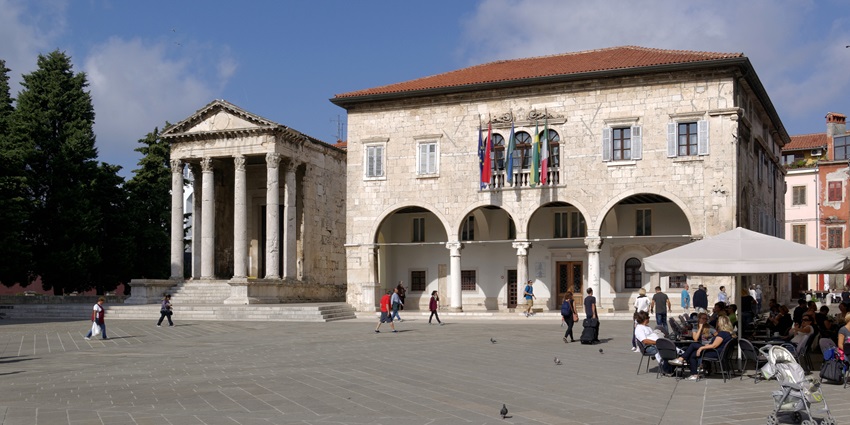
Photo: Berthold Werner / Wikimedia Commons
Situated in the heart of the Istrian Peninsula, Pula serves as a gateway to the Adriatic Sea. Its strategic coastal position has historically made it a significant port city, influencing its diverse cultural and architectural landscape.
How To Reach Pula
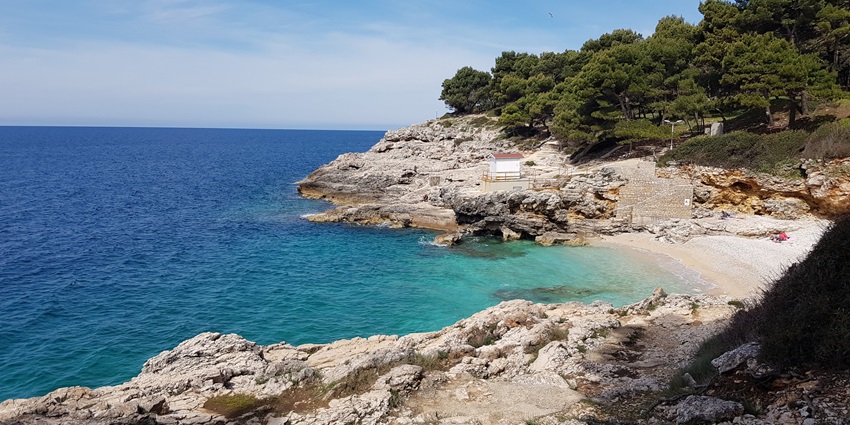
Photo: Gwenael Saint-Genest / Wikimedia Commons
By Air: Pula Airport is approximately 6 kilometres from the city centre. Upon arrival, taxis and shuttle services are readily available to transport you to your accommodation.
By Bus: The city’s central bus station connects the city to major Croatian destinations such as Zagreb, Rijeka, and Split and international cities such as Trieste, Ljubljana, and Venice. The modern bus terminal is conveniently situated on the edge of the old town district, making onward travel straightforward.
By Rail: While Pula’s train station offers services within Istria and into Slovenia, it’s worth noting that Croatia’s rail network is limited in this region.
Places To Visit In And Around Pula
Explore the rich history and natural beauty that Pula and its surroundings have to offer.
1. Pula Arena
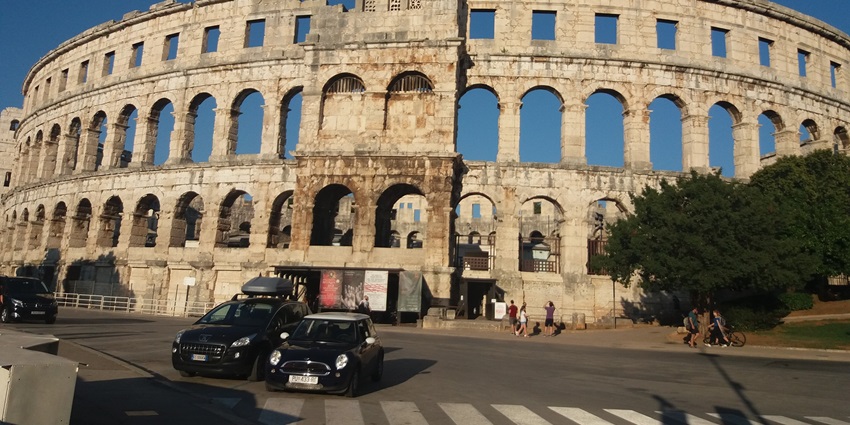
Photo: WorldTravleerAndPhotoTaker / Wikimedia Commons
Pula Arena is one of the best-preserved Roman amphitheatres in the world. Built in the 1st century AD, it could hold around 23,000 spectators during its peak. In ancient times, it hosted gladiator fights, where warriors battled for survival. Today, it is a key venue for concerts, sports events, and the famous Pula Film Festival, which attracts visitors from different countries.
Timings: 8 AM – 8 PM
Entry Fee: Approximately €10 (₹850)
Ideal Trip Duration: 1 – 2 hours
2. Temple Of Augustus
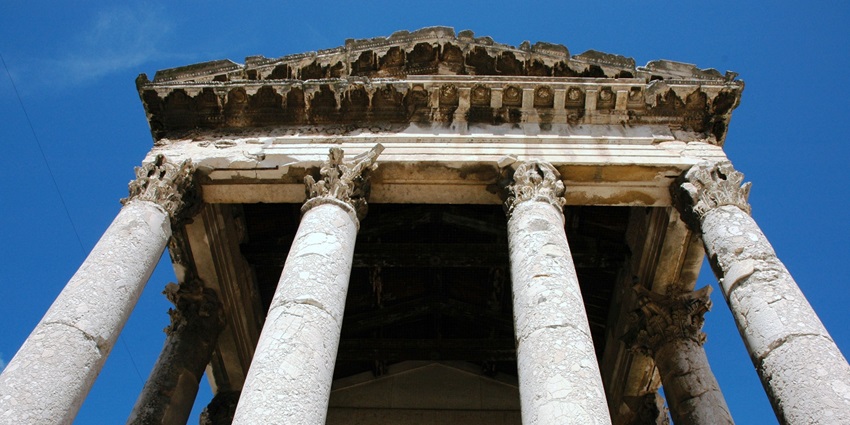
Photo: Josep Renalias / Wikimedia Commons
The Temple of Augustus stands in the Forum Square and was built between 2 BC and 14 AD in honour of the first Roman Emperor, Augustus. It survived several historical events, including bombings during World War II, and was later restored. The temple was originally part of a larger complex with three temples, but only this one remains. Inside, visitors can see Roman statues and stone carvings.
Timings: 9 AM – 9 PM
Entry Fee: Approximately €4 (₹340)
Ideal Trip Duration: 30 – 45 minutes
3. Pula Castle (Kastel)

Photo: Diego Delso / Wikimedia Commons
The Venetians built Pula Castle, or Kastel, in the 17th century to protect the city and its port. The fortress sits on a hill, providing views of the old town and the Adriatic Sea. It was once a key military base, controlling trade routes and defending the city from attacks. Today, it houses the Historical and Maritime Museum of Istria, which displays weapons, maps, and photographs that tell the region’s story.
Timings: 8 AM – 10 PM
Entry Fee: Approximately €5 (₹425)
Ideal Trip Duration: 1 – 1.5 hours
4. Brijuni National Park
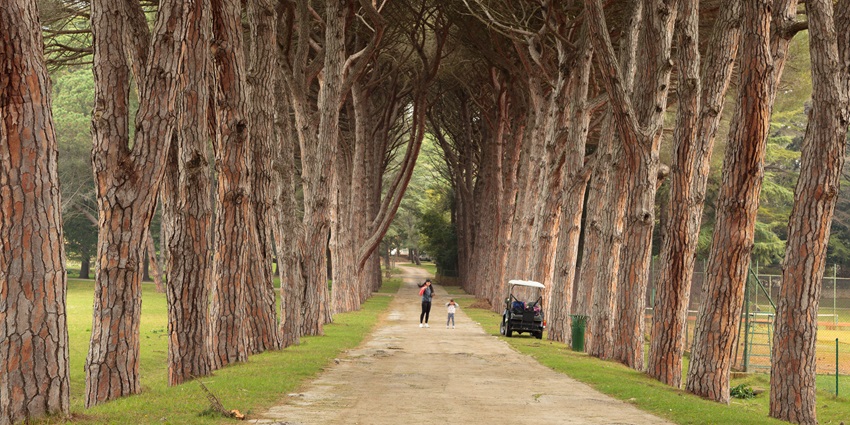
Photo: David Lukšić / Wikimedia Commons
Brijuni National Park is a group of 14 islands just off the coast of Pula. It was once the private retreat of former Yugoslav leader Josip Broz Tito, who hosted world leaders here. The islands are known for their dinosaur footprints, over 100 million years old, and ancient Roman ruins. Visitors can take a guided tour, explore a safari park with deer and peacocks, and visit an archaeological site with remains of Roman villas.
Entry Fee: Approximately €35 (₹2,975), including the boat transfer and guided tour
Ideal Trip Duration: Half-day to full-day excursion
5. Kamenjak National Park
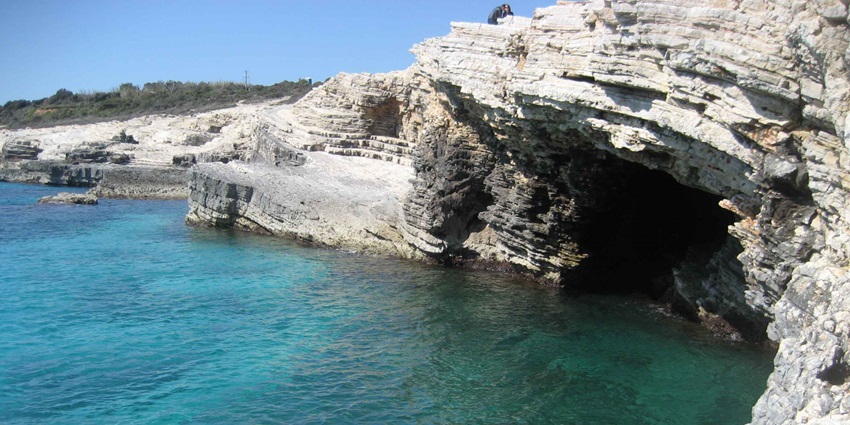
Photo: Croq / Wikimedia Commons
Kamenjak National Park is at the southernmost point of the Istrian Peninsula. It is known for its rocky coastline, clear waters, and many small islands. The area has over 30 kilometres of walking and cycling trails, which lead visitors through forests and open landscapes. People also visit for snorkelling, as the waters are home to many fish and underwater caves. In the summer, a small cliffside bar called Safari Bar serves local food and drinks in a unique setting.
Timings: Open 24 hours; visitor centers operate from 9 AM – 5 PM
Entry Fee: Approximately €10 (₹850) per vehicle
Ideal Trip Duration: Half-day to full-day excursion
Where To Stay

Photo: Đoàn / Pixabay / Image For Representation Only
This city offers a diverse range of accommodations to suit various preferences and budgets. For a touch of luxury, the Park Plaza Histria in Verudela provides modern amenities and stunning sea views. Travellers seeking a more intimate experience might consider the family-run Valsabbion, known for its tasteful decor and personalised service. Additionally, the city centre hosts numerous boutique hotels and guesthouses, ensuring visitors are well-placed to explore local attractions.
Where To Eat

Photo: Zak Chapman / Pexels / Image For Representation Only
The culinary scene in this city is a delightful fusion of traditional Istrian flavours and contemporary gastronomy. Seafood enthusiasts should not miss dining at Konoba Batelina, famed for its fresh catches and inventive dishes. For a blend of Italian and Croatian cuisines, Trattoria Vodnjanka offers homemade pasta and local delicacies. The vibrant Pula Market is also a great spot to sample local cheeses, olive oils, and truffles.
Best Time To Visit
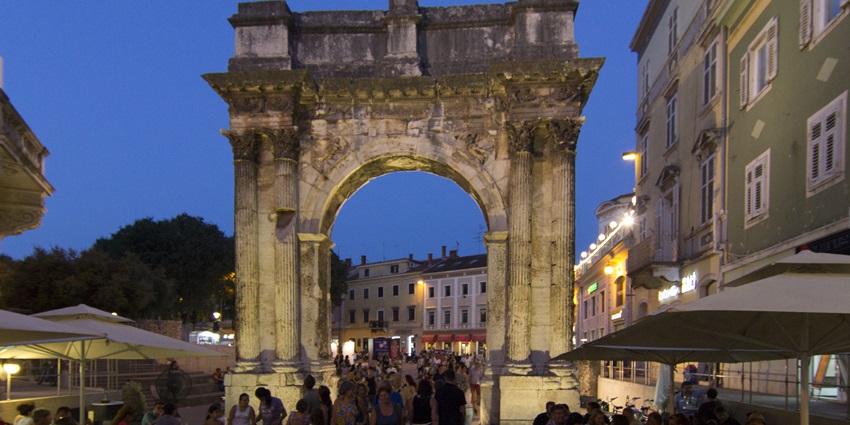
Photo: Sietze Kraak / Wikimedia Commons
The best time to visit is between May and September, when the weather is warm, and the Adriatic Sea is perfect for swimming. July and August are peak tourist months, featuring various festivals and events. If you prefer a quieter experience, visiting in May, June, or September allows you to explore comfortably with fewer crowds.
Other Factors To Consider
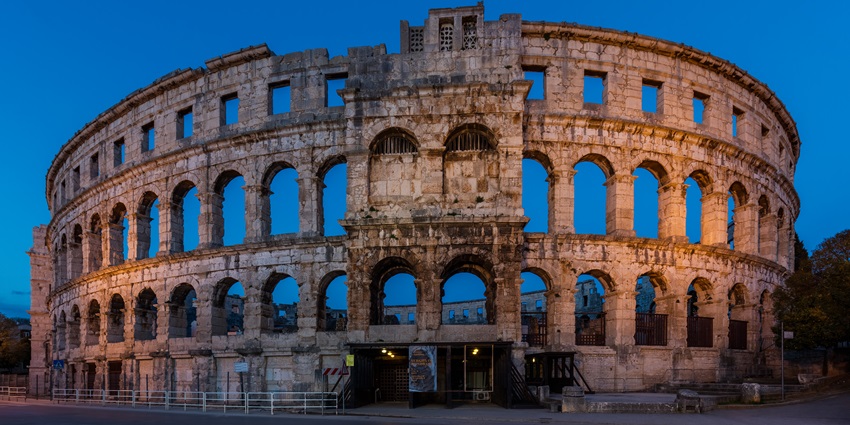
Photo: Diego Delso / Wikimedia Commons
Average Cost Of the Trip
The average trip cost varies based on your travel style. A budget traveller can expect to spend around €50-€70 (₹4,250-₹5,950) per day, including meals, local transport, and accommodation in hostels or budget hotels. Mid-range travellers may spend €100-€150 (₹8,500-₹12,750) per day, while luxury stays can exceed €200 (₹17,000) per day.
Tips for Travellers
- Currency: Croatia uses the Euro (€); exchange money at official exchange offices.
- Public Transport: Buses are the most convenient mode of transport within the city.
- Language: Croatian is the official language, but English is widely spoken.
- Clothing: Pack light summer clothes, but carry a jacket for breezy evenings.
Local Etiquette: Tipping is not mandatory but is appreciated (5-10% in restaurants).
Pula is a city where history and culture come together. From Roman ruins to coastal landscapes, there is something for everyone. The well-preserved monuments, museums, and natural sites make it a great place to explore. Whether visiting for a short stay or a longer holiday, the city has plenty to offer. Plan your trip with TripXL for a hassle-free experience.
Cover Photo: Argo Navis / Wikimedia Commons


 WhatsApp
WhatsApp
 Twitter
Twitter









